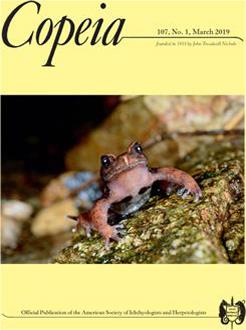Physiological responses to stress are important indicators of the effects of environmental disruption on individuals and, therefore, a way to determine the health of populations. These responses can be measured in a variety of ways, including the survey of differential counts of white blood cells. Baseline cell numbers and neutrophil to lymphocyte ratios have been determined for a number of species in the genus Ambystoma, but not for A. tigrinum, and baseline values are necessary for assessments of stress in natural and captive populations. We counted white blood cells in blood smears from long-term captive and recently captured Eastern Tiger Salamanders (A. tigrinum) and compared the proportions of each cell type between these two samples. We also compared our results to the published values for other post-metamorphic or paedomorphic ambystomatids. Mean neutrophil to lymphocyte ratios, a measure of stress, were higher in our captive salamanders (0.81) than in the wild sample (0.41), as were the mean number of basophils (36.0 for captive and 10.3 for wild). The cell counts for our wild salamanders were comparable to those for other unstressed ambystomatids. Our results suggest that our long-term captive salamanders are under a small degree of stress and are not a good source of baseline values for this species.
How to translate text using browser tools
12 March 2019
White Blood Cell Profiles in Long-Term Captive and Recently Captured Eastern Tiger Salamanders (Ambystoma tigrinum)
Heather L. Waye,
Peter C. Dolan,
Alexis Hernandez
ACCESS THE FULL ARTICLE





